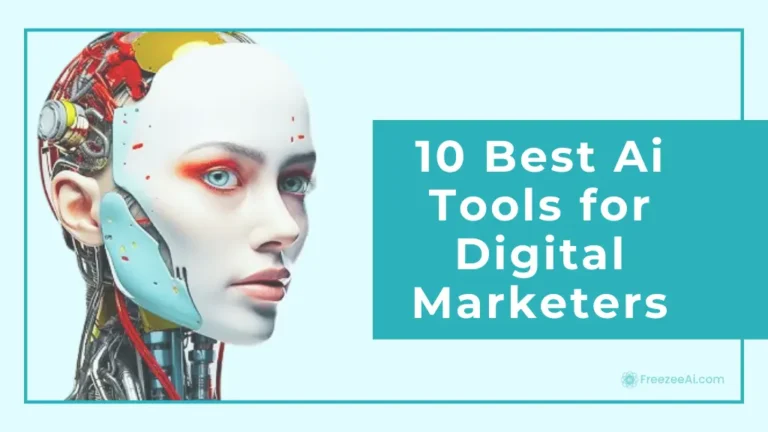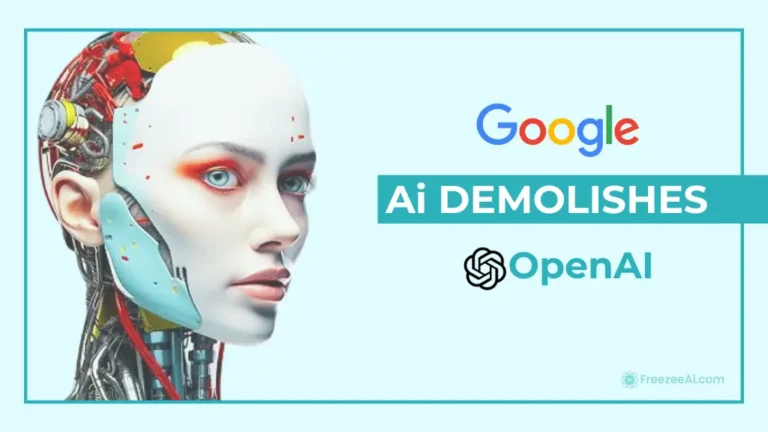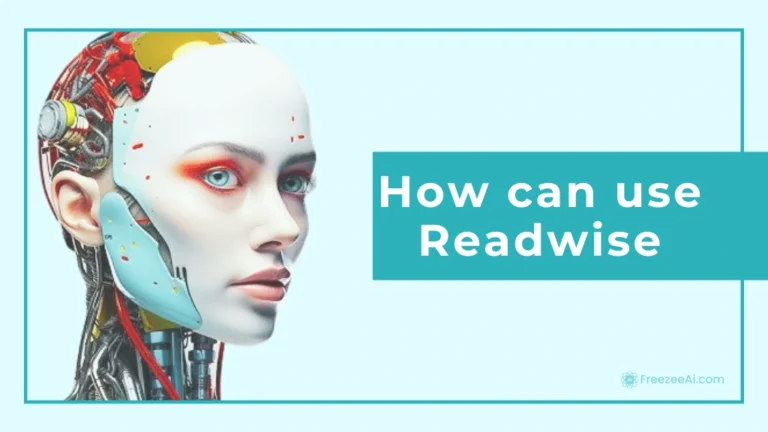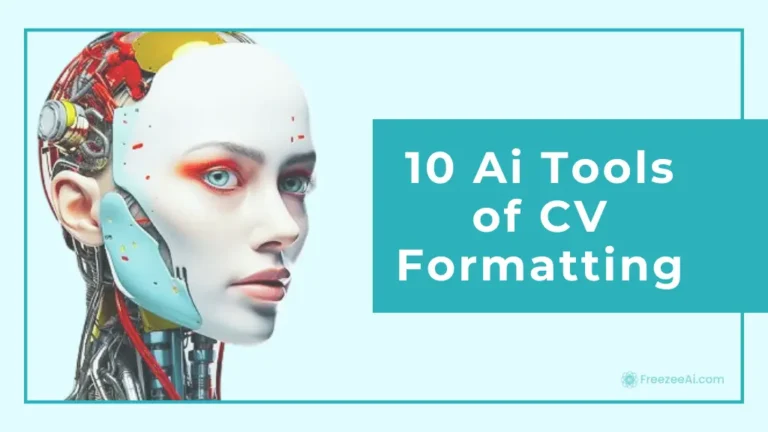Artificial intelligence is evolving at an unheard-of price, and in 2024, one step forward has sent shockwaves throughout the whole enterprise. Google’s VEO-2 version has left experts in awe, redefining the AI panorama. With its release, the debate over AI supremacy has taken a dramatic flip, as many agree that OpenAI’s SORA has been decisively outperformed.
In this article, we examine the impact of Google’s VEO-2, discover why it’s causing such disruption, and spotlight the progressive functions that set it aside.
Google’s VEO-2 I just shook the ENTERPRISE! (OpenAI SORA Beaten) Full Breakdown
The Rise of VEO-2: What Makes It Different?
When Google unveiled its VEO-2 model, few predicted the industry-huge upheaval it would trigger. As a long-standing AI powerhouse, Google has taken an extensive soar forward, leaving its closest competition suffering to preserve up.
At the heart of VEO-2’s success lies its present-day multimodal structure. Unlike its predecessors, VEO-2 would not simply excel in textual content generation—it integrates vision, decision-making, and actual-time hassle-solving seamlessly. The capacity to synthesize more than one sort of record, which includes pix, audio, and text, sets it aside from preceding fashions like OpenAI’s SORA, which is more often than not centered on conversational AI.
Google’s AI Breakthrough: From V1 to VEO-2
Google’s brand new VEO-2 model marks a large soar in AI improvement. While Google’s initial V1 version turned into quietly examined at the back of closed doorways, its successor has shattered expectations, surpassing OpenAI’s SORA 2 and different main AI models.
VEO-2 has been fastidiously evaluated against top contenders like Meta’s Movie-Gen 108p and OpenAI’s Sora Turbo, continuously outperforming them. Google’s model has proven tremendous upgrades in producing awesome simulations, achieving enterprise-main realism, in particular in fluid motion and physics-based interactions. In comparative assessments, VEO-2 was preferred by users more than 50% of the time, solidifying its dominance in the AI space.
OpenAI’s SORA: Why Did It Fall Behind?
Before VEO-2, OpenAI’s SORA changed into considered a gold widespread in the AI-pushed conversational era. Its capability to generate human-like responses, manner contextual information, and assist diverse applications throughout customer service, healthcare, and training made it a powerful pressure.
However, because the demand for multimodal AI solutions grew, SORA’s boundaries have become apparent. While it excelled in text-based total interactions, it lacked the potential to seamlessly combine visible and sensory facts. VEO-2, alternatively, filled this gap with the aid of providing actual-time visual reputation, image processing, and audio analysis, making it an advanced desire for holistic AI-driven answers.
That Makes VEO-2 a Game-Changer
Google’s VEO-2 represents a primary soar forward in synthetic intelligence, introducing revolutionary capabilities that set it apart from its competition. With its advanced talents, VEO-2 is redefining the standards for AI-powered answers throughout more than one industry. Here are the important thing attributes that highlight its superiority:
1. Real-Time Contextual Awareness
One of the most massively demanding situations AI fashions have faced in the past is keeping lengthy-term context and know-how complex conversations through the years. Unlike traditional models that generate responses in isolation, VEO-2 has a complicated memory machine that allows it to hold and construct upon past interactions.
This feature complements the user experience throughout more than one application, whether or not it’s supplying ongoing customer service, supporting professionals with research, or undertaking long-term discussions with customers.
2. Multimodal Integration
VEO-2 stands proud because of its potential to seamlessly method and integrate data from a couple of resources, consisting of text, pix, audio, or even emotional cues. Unlike its predecessors, which usually trusted textual content-based interactions, VEO-2 can interpret and analyze distinctive varieties of input concurrently.
For example, in a customer support scenario, VEO-2 can concentrate on a purchaser’s tone of voice, analyze their spoken phrases, or even verify their facial expressions via a video name.
3. Advanced Visual Understanding
With contemporary image popularity and evaluation talents, VEO-2 can pick out objects, understand faces, and interpret body language, making it worthwhile in industries consisting of healthcare and security.
4. Dynamic Problem-Solving
Unlike SORA, which is primarily centered on textual content-based total interactions, VEO-2 adapts dynamically to evolving conversations and hassle-solving scenarios, making it a long way more versatile across numerous packages.
Industry Reactions: What Experts Are Saying
The release of Google’s VEO-2 has ignited substantial dialogue amongst AI researchers, industry leaders, and era fanatics. Experts view it as a groundbreaking development that is set to redefine synthetic intelligence and its applications across multiple sectors. Many consider that VEO-2 marks a turning point, pushing AI closer to human-like know-how and interplay. With its multimodal competencies and superior problem-solving skills, this new version is predicted to steer a vast range of industries, from healthcare to finance, amusement, and beyond.
AI in Healthcare
The healthcare industry is poised to enjoy a prime transformation with the combination of VEO-2. One of its most revolutionary functions is its capacity to research scientific photos—including X-rays, MRIs, and CT scans—at the same time as additionally considering an affected person’s medical history, signs and symptoms, and genetic records. This allows for early ailment detection, more accurate diagnoses, and tailor-made treatment guidelines.
Doctors and scientific experts can utilize VEO-2 as a complicated diagnostic assistant, lowering the threat of human mistakes and enhancing patient outcomes. Its real-time statistics evaluation capabilities additionally make it a valuable tool in medical studies, where it can perceive patterns in illnesses, expect fitness traits, and advocate new treatment methodologies. With VEO-2’s help, healthcare companies can enhance selection-making, enhance efficiency, and, in the long run, save more lives.
AI in Customer Service
Businesses worldwide are rapidly integrating VEO-2 into their customer support platforms, taking advantage of its superior multimodal talents to enhance personal interactions. Unlike traditional chatbots that rely solely on textual content-based responses, VEO-2 can analyze a consumer’s speech styles, tone of voice, or even facial expressions throughout video interactions. This allows it to understand emotions, hit upon frustration or satisfaction, and reply in a way that feels greater natural and human-like.
For example, if a client sounds frustrated, VEO-2 can adjust its reaction to be more empathetic, providing reassurance and personalized solutions. This degree of emotional intelligence allows corporations to build stronger relationships with their customers, enhance delight fees, and streamline guide offerings. Additionally, VEO-2’s potential to address complicated queries in actual time reduces wait instances and enhances average efficiency in customer service operations.
With its advanced adaptability and contextual attention, VEO-2 is a brand-new fashion for AI-driven customer service, making interactions greater enticing, responsive, and personalized.
The Future of AI: What’s Next After VEO-2?
Google’s VEO-2 has set a new benchmark for AI technology. However, the innovation doesn’t stop here. Experts are expecting that future AI fashions will adapt, becoming even more incorporated into daily lifestyles. From superior neural architectures to deeper actual-global programs, AI is poised to revolutionize multiple industries, inclusive of finance, training, and enjoyment.
However, with fantastic energy comes notable obligations. As AI becomes more pervasive, moral considerations regarding statistics privacy, bias, and regulatory oversight will become more and more crucial. The enterprise must address these worries to make certain AI is advanced and deployed responsibly.
Conclusion: Googles VEO-2 Just SHOCKED THE ENTIRE INDUSTRY!
The launch of Google’s VEO-2 has undeniably disrupted the AI industry, outperforming OpenAI’s SORA and redefining the abilities of artificial intelligence. With its advanced multimodal integration, real-time hassle-fixing, and dynamic contextual awareness, VEO-2 stands as a testament to Google’s leadership in AI innovation.
As industries continue to adopt AI-powered answers, VEO-2 will have an impact on the future of technology, setting new standards for performance, efficiency, and real-world applicability. One issue is clear—Google’s latest step forward has modified the sport, and the arena of AI will by no means be equal once more.
I’ve created a detailed article masking Google’s VEO-2 and its impact on the AI enterprise. Let me know in case you’d like all changes or additional information.






